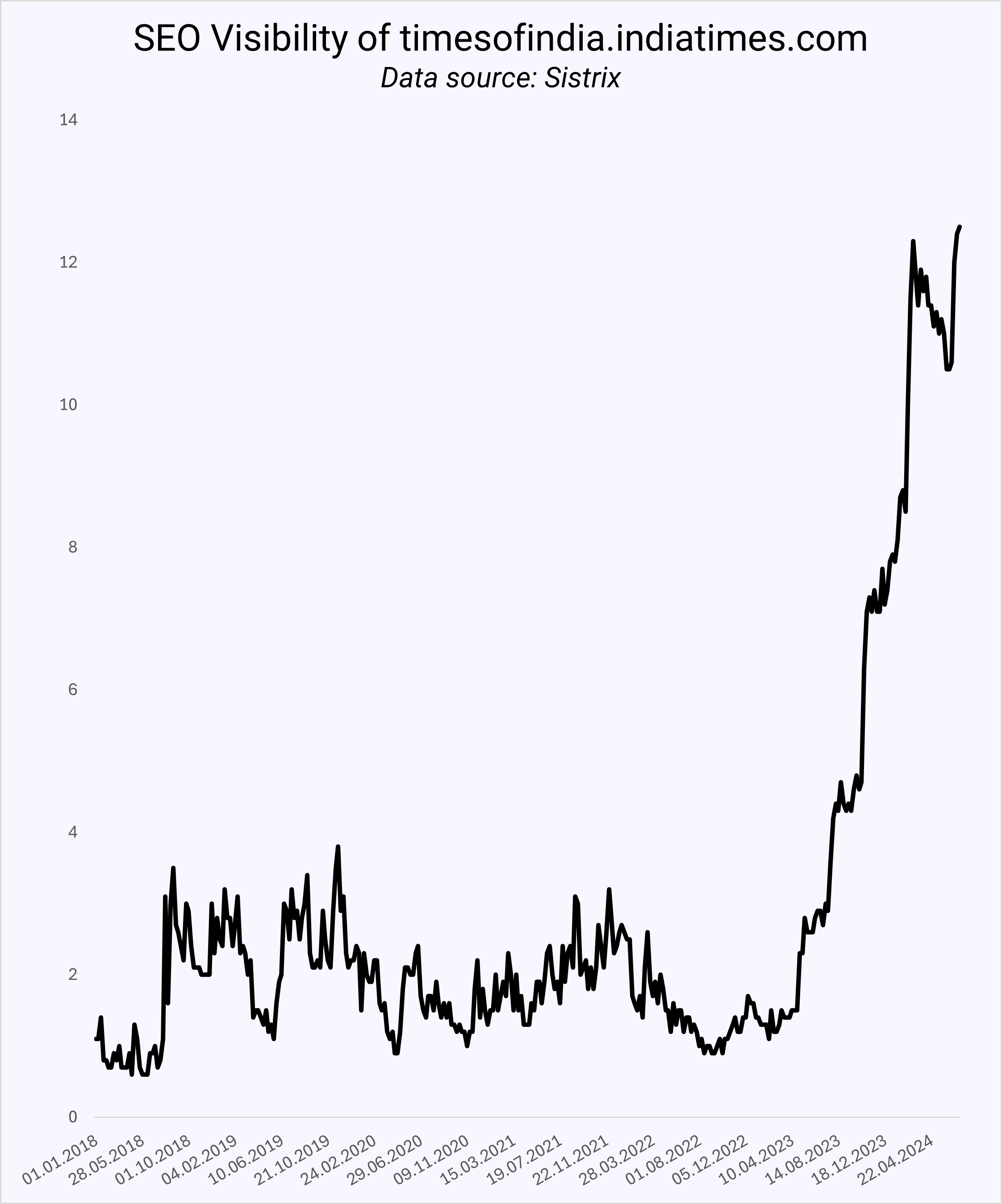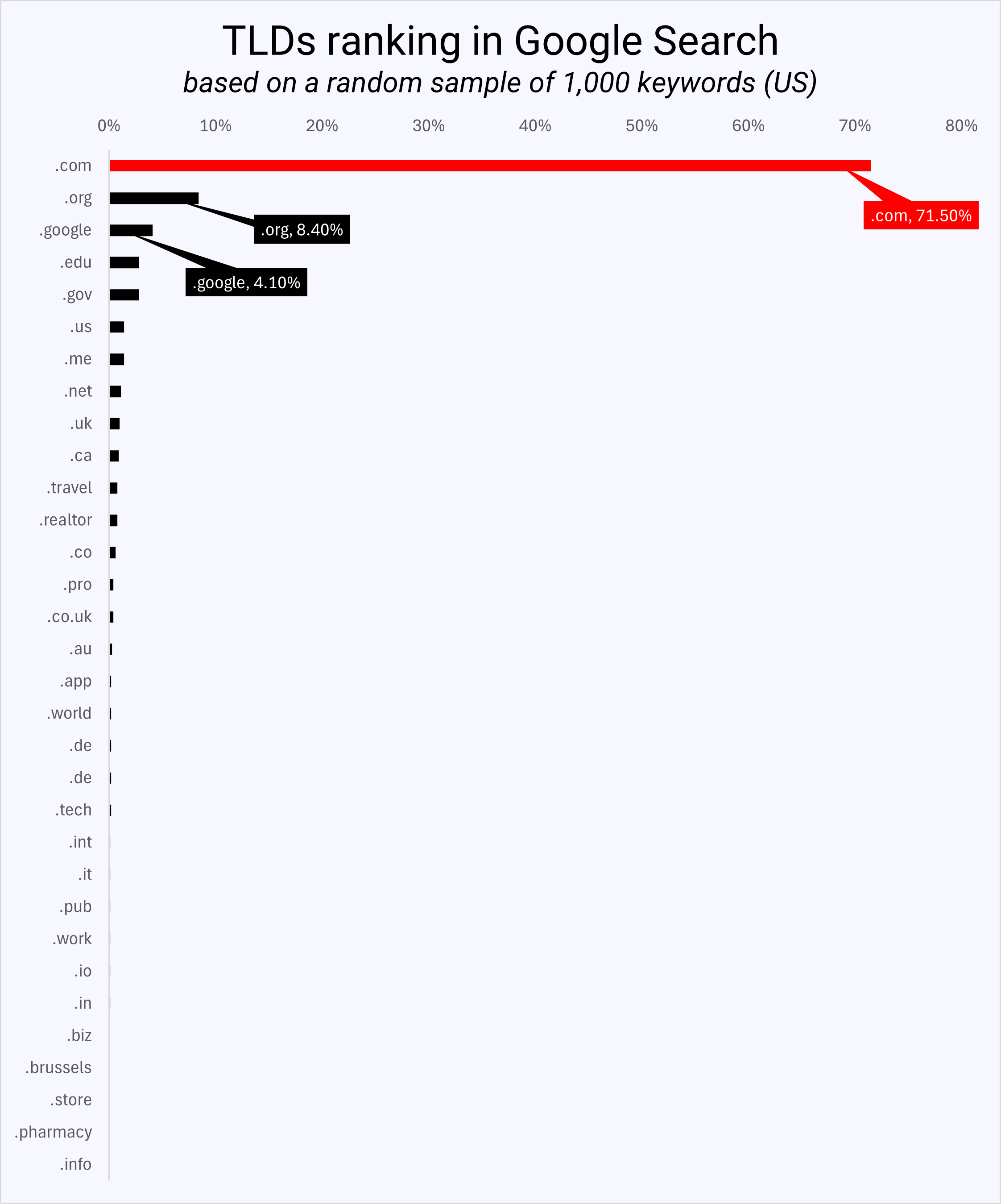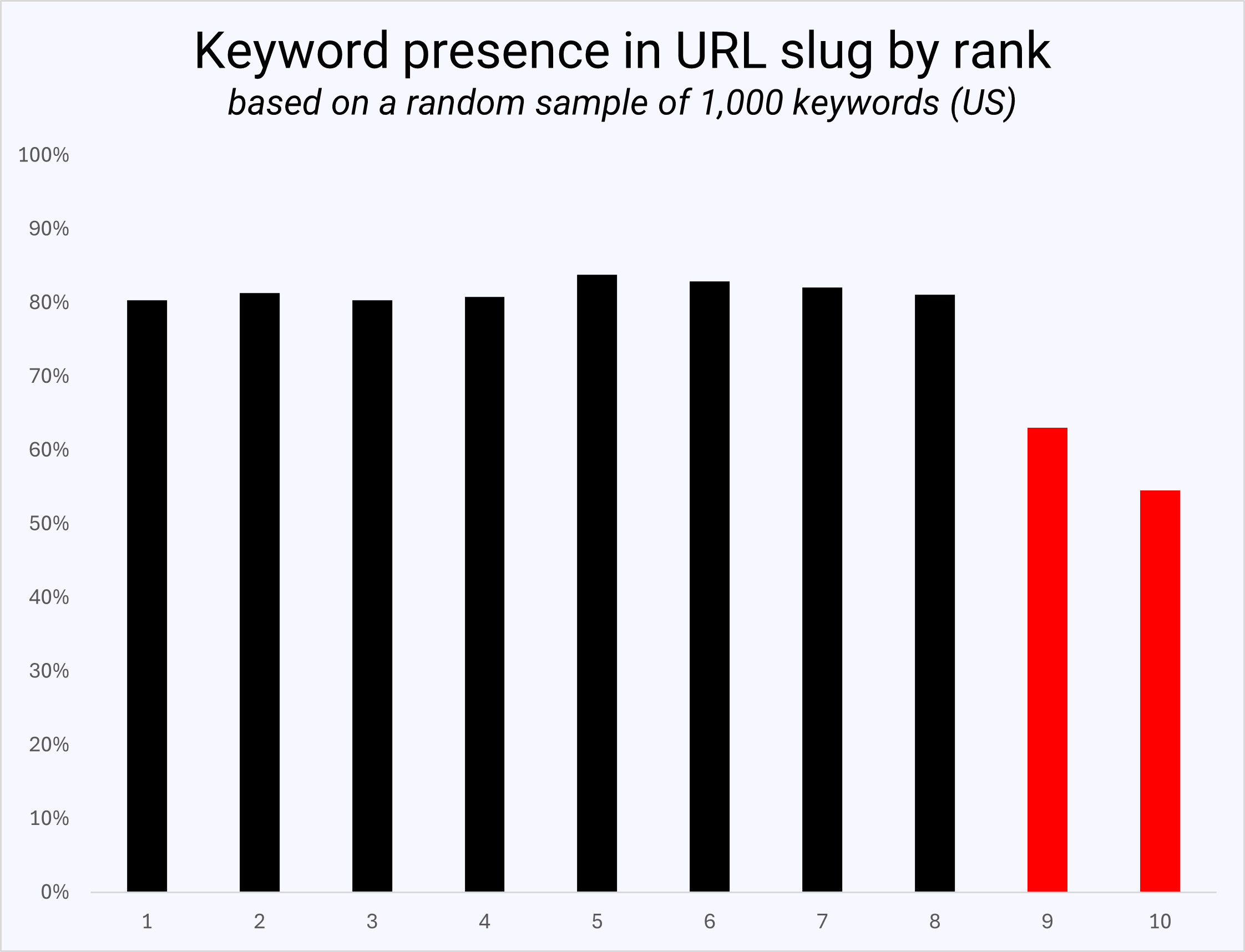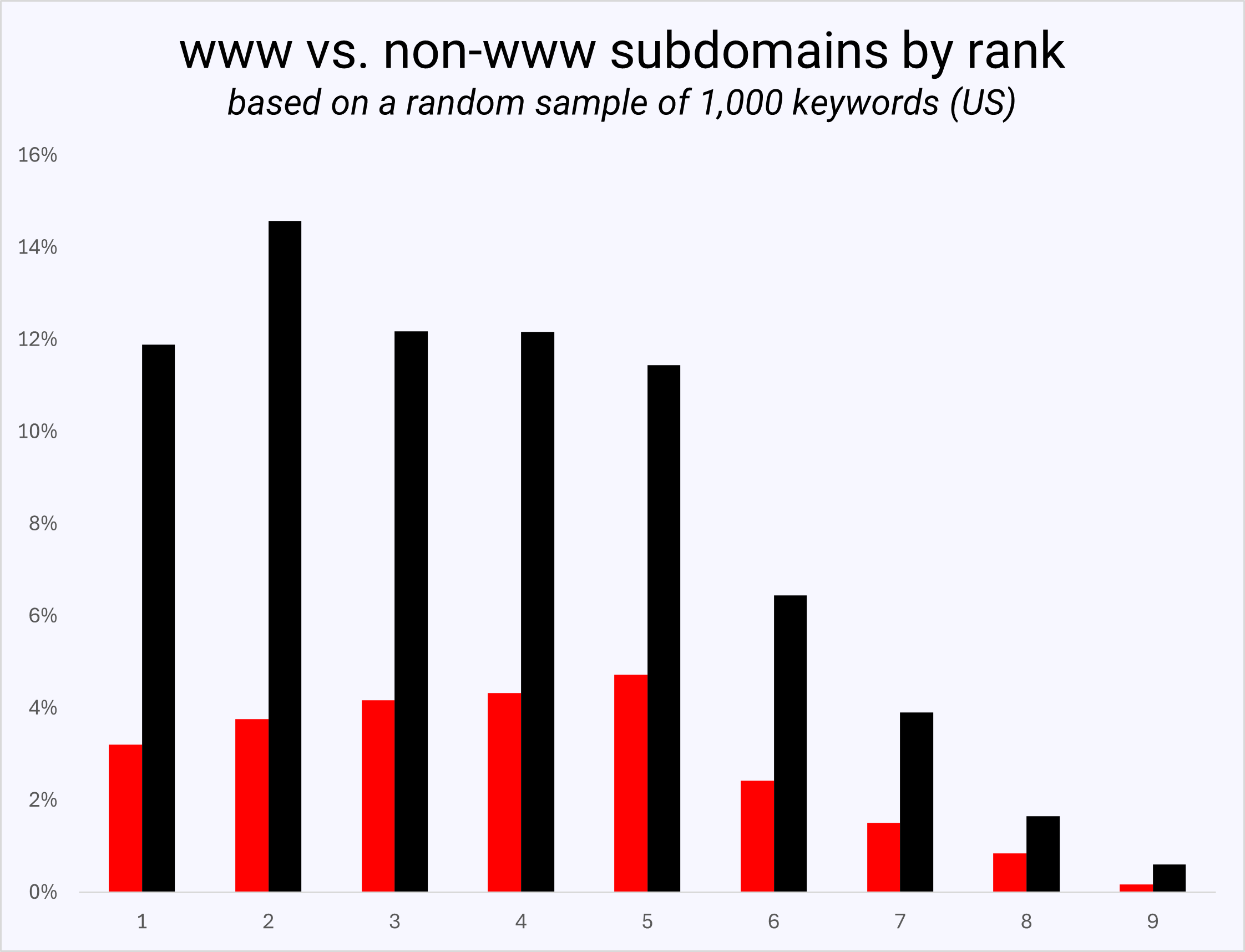Since the Times Of India quadrupled its organic growth in the US in 12 months, more ccTLDs (international domains) have been spotted ranking in the US.
 Image Credit: Kevin Indig
Image Credit: Kevin IndigMore international domains would make sense as Google is testing country labels indicating where the site operates.
Google has also expanded Translated Results:
Translated Results is a Google Search feature that will automatically translate the title link and meta description into the local language of a user, making a website published in one language available to a searcher in another language. If the searcher clicks on the link of a translated result the web page itself will also be automatically translated.
Maybe Google wants more international domains in US Search? If a site in English from another country is a better result in an English-speaking country, why not rank it?
International domains might be most relevant when the location matters less.
For example, publishers could rank in other countries with the same language, but SaaS or ecommerce companies that don’t sell in that specific country would not be a good result. As a result, the playing field for “foreign” domains would grow.
Boost your skills with Growth Memo’s weekly expert insights. Subscribe for free!
Do More ccTLDs Rank In The US?
I picked 1,000 random keywords from a large pool of queries across travel, ecommerce, publishing, SaaS, services, finance, health, and other verticals.
The data surfaced 4,538 domains in organic results. I focused heavily on the first five positions on Google since any URL ranking higher than that likely won’t see much traffic, especially with the flux of SERP features these days.
 Image Credit: Kevin Indig
Image Credit: Kevin IndigThe data shows that .com domains rank 71.8% of the time in the top five positions, followed by .org (8.4%), .google (4.1%), .edu and .gov. Only 52 out of 4,538 domains were from the UK, 11 from Canada, and three from India.
As a result, we can say that international domains performing in the US, like the Times of India, are outliers more than the norm.
What Else Can We Learn From The Data About URL Structure?
The dataset of 1,000 random keywords provides more insights into the nature of TLDs, subdomains, and URL slugs in terms of organic ranks.
TLD Matters A Bit
I wanted to find out if the TLD (.com, .net, .org, etc.) has an impact on ranking. Traditionally, we know that ccTLDs (country-code TLDs like .fr) have a better chance of ranking in their respective country than gTLDs (generic TLDs like .com), which are country-agnostic.
I ran correlations between TLDs and rank across 7,678 results while normalizing for factors around backlinks, content quality, content volume, and rank distribution – but I couldn’t find any relationships. I found that:
- .net TLDs have a lower chance of showing up in the top two positions.
- .us didn’t show up in top positions at all (even though I know a .us domain that performs really well).
- .gov has the best chance to rank at the top – go figure.
- .uk has a lower chance of ranking at the top compared to .com.
- .co has a lower chance of ranking at the top than .com.
- .edu doesn’t perform as well in position 1 compared to .gov.
- .org has a higher chance of ranking at the top than .com (might be influenced by Wikipedia).
- .com TLDs rank 71.8% in the top 5 but are registered only 36.31% as often compared to other TLDs (~2x).
 TLD by average rank in organic search (Image Credit: Kevin Indig)
TLD by average rank in organic search (Image Credit: Kevin Indig)The rank benefit of a .com domain is disputable: Due to mere exposure, users are more familiar with .com domains, which means sites might be more likely to link to them, too.
Even if .com domains got a small rank boost from Google, it most likely doesn’t outweigh the importance of content, backlinks, brand, and user experience.
URL Slugs Matter A Bit
Next, I wanted to answer whether having the keyword in the URL slug, the part after the TLD, matters.
The data shows no advantage to having the keyword in the URL slug for ranking in the top eight positions. However, URLs ranking in positions 9 and 10 carried the keyword way less often, indicating that its tables take to “apply” for the top results.
 Image Credit: Kevin Indig
Image Credit: Kevin IndigIn conclusion, scanning for the keyword in the URL or meta title was and is a low-hanging fruit SEO exercise.
From experience, optimizing the slug just to match the keyword is not worth the cost of a redirect. It should be taken into consideration more when creating a new URL.
Subdomains Matter A Lot
Lastly, I was curious whether (non-www) subdomains have an impact on rank.
In Google’s ranking factor leak, we learned that keyword exact-match domains (EMDs) were demoted many years ago. Google also evaluates subdomains separately from root domains, which makes sense because they have a different DNS address.
 Image Credit: Kevin Indig
Image Credit: Kevin IndigI found in the data that URLs, including www, show up on average thrice as often in the top five results as non-www subdomains.
That ratio shrinks as we go further down the SERPs, meaning there does seem to be a benefit of avoiding subdomains, even though we always have to consider the non-SEO benefits of subdomains.
Google Tests Country Label In Search Result Snippets
Google’s Now Translating SERPs Into More Languages
Featured Image: Paulo Bobita/Search Engine Journal
